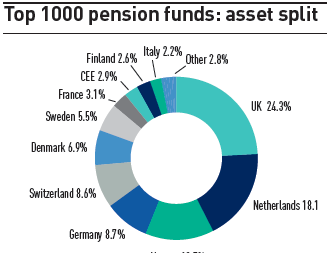Switzerland’s first-pillar pension buffer fund will have to gradually adjust its investment strategy if its assets shrink as expected, its management has said.
It warned it would have to favour short-term, liquid assets, which would have negative impact on returns.
The AHV fund is one of three buffer funds for federal social security schemes in Switzerland. Since 2014 they have been grouped under the umbrella heading of Compenswiss.
The outlook for the AHV fund’s financial situation was worrying, its management said in a statement. Due to demographic trends, in particular an ageing population, the gap between expenditure and income was growing bigger with every year.
The AHV Fund will run out of assets by the end of 2030 at the latest, according to calculations run by Switzerland’s federal social security office after last year’s rejection of a comprehensive pension reform proposal (Altersvorsorge 2020) and the proposed increase in value-added tax as additional AHV financing.
The Compenswiss management also noted that IV, the disability insurance buffer fund, would find it more difficult to pay down CHF11.4bn (€9.9bn) of debt owed to AHV. This was because time-limited additional financing for IV lapsed at the end of 2017, so the federal government would no longer pay the interest on the AHV debt.
The Compenswiss buffer funds gained 7.11% after hedging in 2017, one of the best performances since 2010. Last year they returned 3.93%.
The funds’ total assets grew from CHF34.8bn to CHF36.8bn, of which CHF2.2bn was in a liquidity portfolio. The return on this was 0.25%.
Equities were the best performing asset class in the funds’ aggregate portfolio, gaining 21%, according to performance figures on the Compenswiss website.
Real estate returned 9.15%, multi-asset portfolios 6.65% and commodities 6.13%. Investments in foreign currency bonds produced a gain of 5.22%.
The return for the buffer fund for pensions was 6.82%, compared with 3.75% in 2016.
Total operational and investment management costs amounted to 0.2% of investment assets, up on 0.02% the year before.
Compenswiss the institution
As of January next year Compenswiss will be a formally established public institution. A law providing the basis for this was passed by the federal parliament in June, and part entered into force last month.
“This will create a clear legal position, increase transparency and clarify the supervision of the buffer funds,” the management said in a statement.



























No comments yet